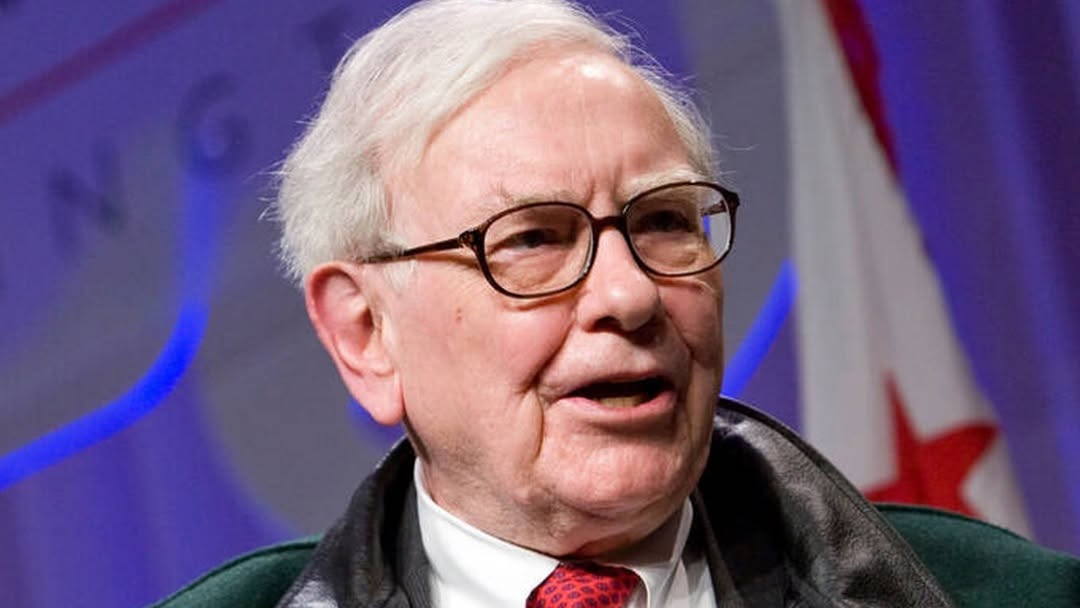Warren Buffett’s 80/20 Rule: The Key to Smarter Investing
- Age: 94 (born August 30, 1930)
- Business: CEO of Berkshire Hathaway, investor, philanthropist
- Height: 5’10” (178 cm)
- Spouse: Astrid Menks (married in 2006), previously married to Susan Buffett (until her passing in 2004)
- Children: Susan, Howard, and Peter Buffett
- Net Worth: $146.2 billion (as of 2024)
Warren Buffett, one of the world’s greatest investors, has built his fortune not by making countless investments but by focusing on a select few that truly matter. His approach aligns with the 80/20 rule, also known as the Pareto Principle, which states that 80% of results come from 20% of efforts.
So, how does Buffett apply this rule, and how can you use it to improve your investing, career, and decision-making? Let’s break it down.
Related: Warren Buffett: The Billionaire’s Daily Routine & Secrets to Success
Related: Inside Bill Gates' Stock Portfolio: His Top Investments and Their Value
What Is Warren Buffett’s 80/20 Rule?
The 80/20 rule suggests that a small portion of your actions (20%) will generate the majority of your results (80%). In investing, Buffett uses this principle to focus only on the most valuable opportunities, rather than spreading his efforts across numerous investments.
Instead of constantly buying and selling stocks, Buffett spends 80% of his time reading and thinking, ensuring that when he does invest, he makes the right decision—one that will compound over time.
Read more about Warren Buffett's by the author and investor Robert Hagstrom about The Warren Buffett Way describing the twelve investment tenets of Warren Buffett's strategy called business-driven investing and his distinct approach to managing a portfolio of businesses. Find the book here.
His business partner, Charlie Munger, put it best:
“In my whole life, I have known no wise people who didn’t read all the time.”
Buffett also teaches the 20-slot rule, where he challenges people to imagine they can only make 20 investments in their lifetime. This forces them to think long-term and carefully select only the best opportunities.
Related: The Business Model of AriZona Tea: How It Stays at 99 Cents
How Does the 80/20 Rule Work?
Buffett’s approach follows these key principles:
- Prioritize High-Impact Decisions – Focus on the small percentage of choices that will bring the biggest returns.
- Limit Impulse Decisions – Avoid reacting to short-term market fluctuations. Instead, take time to research and think before investing.
- Invest for the Long-Term – Buffett doesn’t buy and sell frequently; he holds investments “forever” if they are solid.
- Focus on Your Circle of Competence – Instead of investing in everything, he only invests in businesses he deeply understands.
- Apply Compound Learning – Spend time reading and thinking to accumulate knowledge that will pay off over time.
The Benefits of the 80/20 Rule
Buffett’s success proves that doing less can actually achieve more. Here’s how this strategy benefits investors and entrepreneurs:
Better Decision-Making – By focusing on a few key investments, you reduce risk and increase the likelihood of success.
Less Stress & Overwhelm – Instead of chasing every opportunity, you concentrate on the most valuable ones.
Higher Long-Term Gains – Fewer, well-researched investments lead to higher compounding returns over time.
More Time for Thinking & Learning – Instead of constantly trading, you can spend time gaining knowledge and making smarter choices.
How to Apply the 80/20 Rule in Life & Business
Buffett’s strategy isn’t just for investing—it can be applied to any area of life:
Career Growth – Focus on the 20% of skills that will drive 80% of your success.
Time Management – Identify the few key tasks that generate the biggest results.
Personal Development – Read and learn from high-impact sources, rather than consuming too much random information.
Business Strategy – Double down on your best products or services instead of trying to do everything.
Warren Buffett’s 80/20 rule proves that success isn’t about doing more—it’s about doing the right things. Whether in investing, business, or personal growth, focusing on the most valuable 20% of actions can lead to massive long-term rewards.
So, take a step back, read more, think deeply, and make fewer but smarter decisions—just like Buffett.









